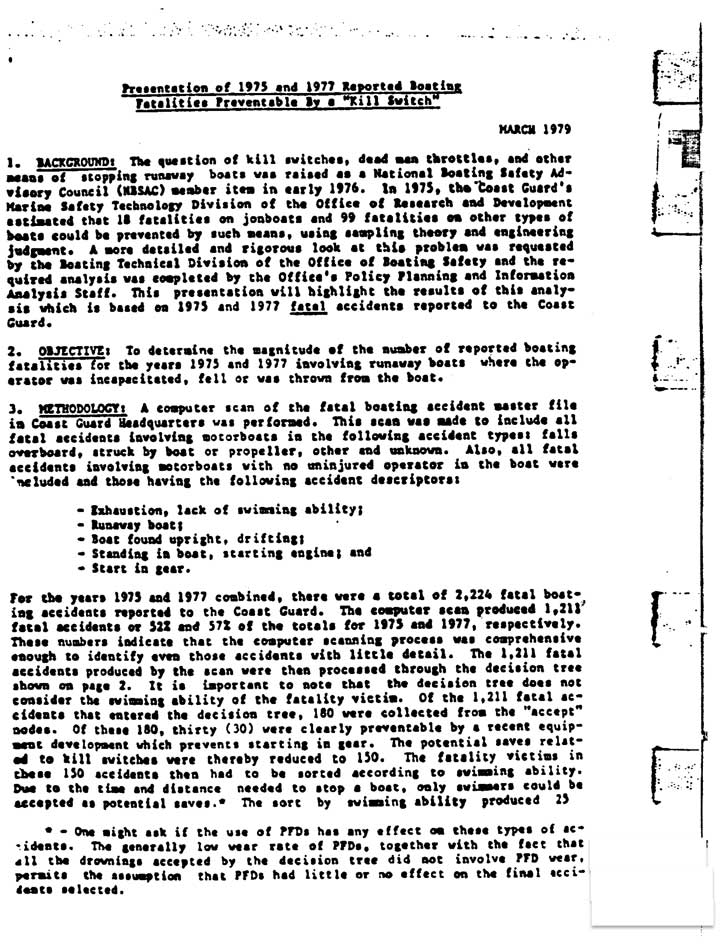Propeller Safety History Repeats Itself, Repeats Itself ….
U.S. Coast Guard’s report on preventable accidents is available from their USCG-2009-0206 docket folder by using the red PDF icon about 2/3 the way down the right side of the Preventable Deaths and Injuries Report page. The version of the document currently posted was last revised in May 2010.
In their review of boat kill switch preventable accidents, USCG does a great job of explaining in detail how they identified accidents that might have been preventable from the BARD data. They also explain in detail the process used to review the selected BARD accident reports to make a determination if they could have been prevented by an engine cut-off switch or not.
What we found most interesting was the similarities between the current USCG list of preventable deaths and injuries and a March 1979 USCG NBSAC (National Boating Safety Advisory Council) document titled, “Presentation of 1975 and 1977 Reported Boating Fatalities Preventable by a Kill Switch”. The first page of that document is viewable below. Click on it to view a portion of the March 1979 USCG kill switch study.
We found no mention of this document in the current proposal. Everybody from the Boating Safety Office from that era has probably moved on, retired, or passed on. It is has probably been lost and forgotten. Its amazing the way this issue keeps going around and around.
By the way, the modern day analysis found about 89 or 128 engine cut-off switch preventable fatalities over the five year period (data was analyzed two ways), resulting an average of 17.8 or 25.6 kill switch preventable fatalities per year (calculated two ways).
The 1979 analysis found 55 preventable fatalities in 1975 and 40 preventable fatalities in 1977 for an average of 47.5 kill switch preventable fatalities per year.
There are many things to consider when comparing accident data sets 30 years apart. Among them, there are probably more boats now, hopefully accident reporting percentages have improved, medical care is much better (we are now able to save some that would have been lost in the 70’s), boating safety classes are probably more prominent, and “on water” law enforcement is probably more visible. The 1979 report also excluded 30 fatalities they though could be saved with some recent developments to prevent motors from being started in gear, plus they excluded some more based on their swimming abilities. With all those variables and more, we will make no further comparison of the data at this time.
Talk about deja vu, while the modern day report covers both injuries and fatalities when the operator was ejected, the 1979 report only covers fatalities when everybody was ejected, other than that, they are extremely similar. If I were a representative of the boating industry, I would not want to stand in front of the family of a modern deceased victim from a boat without a kill switch and have to explain that even after the 1979 study we are still “considering” making kill switches standard equipment 3 decades later, and that if the new rule USCG-2009-0206 is adopted, we will still need many years to comply.
Hopefully somebody won’t have to sit across from families in 2038 and explain the same thing regarding the 2008 report.
You may also find our History of Boat Kill Switches post interesting.

